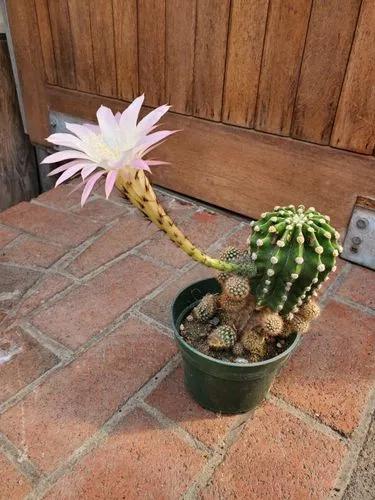A small unique-looking cactus that won’t demand much from you while offering colorful flowers and patterned stems.
Texas Rainbow Cactus Care
Echinocereus dasyacanthus



Native to New Mexico and Texas, this cactus can be found on rocky slopes, desert floors, and other arid environments. It is known for its ornamental value, unique body, and bright, colorful flowers.
Also known as Spiny Hedgehog Cactus, identification can be made by its characteristic subtle multicolored rings along the stem, giving it its name. However, not all types of this plant will display such rainbow-like bands.
Texas Rainbow Cactus has distinctive sweet-scented bright yellow flowers that flourish between March and May and grow from the sides of the stem. Shades of yellow will vary, and its long petals are tinged green at the base and magenta on the outside of the pointed tips. Stems are cylindrical and can be yellow, pink, or tan.
Easy to care for and low maintenance, this cactus doesn’t grow above 15 inches (38 cm) and is usually arranged in a single stem, although older cacti tend to create other heads.
How to Care for the Plant

Water

Texas Rainbow Cactus requires little water. The soil should be kept mostly dry, so give it thorough watering on the fully dried ground. Allow the soil to get evenly moist, discarding unnecessary water. Avoid overwatering and excess humidity.

Pruning

This plant doesn’t require pruning.

Fertilizer

Feed the cactus once a month with liquid fertilizer during the growing season and complemented with natural materials such as crumbled or powdered eggshells. Don’t fertilize in winter.

Sunlight

This plant naturally needs long sun exposure, so keep your cactus under indirect sunlight for at least 6-8 hours a day. Protect it from intense, direct sunlight, especially during the hottest parts of the day.

Soil

This cactus plant prefers a well-draining soil mix specifically formulated for succulents. Usually, such kinds of soils consist of a combination of materials like sand, perlite, vermiculite, and pumice, which help to improve drainage and prevent waterlogging.

Propagation

The easiest way to propagate Texas Rainbow Cactus is stem cuttings. Start by selecting a healthy stem from the parent plant and letting it dry out for a few days until it forms a callus. Then, plant it in a container and keep the soil moist but not waterlogged. Place the container in a warm, brightly lit area and wait for the stem to take root and grow into a new plant.

Temperature

Rainbow Cactus is heat tolerant; ideally, temperatures should be between 68-95 ºF (20-35 ºC). To avoid dormancy, the climate should never drop below 50 ºF (10 ºC) or rise above 95 ºF (35 ºC). This cactus enjoys well-ventilated environments.

Container

This plant feels comfortable in a well-draining container slightly larger than its root ball. The pot should have draining holes and, preferably, be made of porous, organic material such as terra cotta or unglazed ceramic to ensure proper aeration and avoid root rot.

Fun fact

Only the most effective pollinators can fertilize this cactus. Its nectar is accessible to only those capable of reaching deep into the flower with long tongues.

Popularity

211 people already have this plant 44 people have added this plant to their wishlists
Discover more plants with the list below
Popular articles






